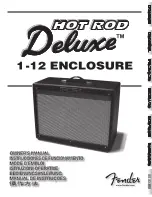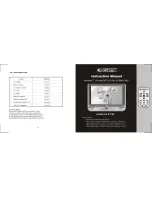
SPG366A-600 Series
Larson Electronics, LLC
Phone: (800) 369-6671
Fax: (903) 498-3364
www.larsonelectronics.com
2 of 6
IMPORTANT
Please read and follow all of the instructions and safety messages listed below and labeled on the trailer
before operation. Death or serious injury to you, your passengers, and others on the road may result if these
instructions are not followed. Make sure all operators understand these instructions prior to using the
equipment.
CONNECTING THE TRAILER
1.
Lower the coupler onto the ball hitch on the vehicle. Make sure it is properly secured.
2.
Push down on the handle located on top of the coupler to lock the coupler in place.
3.
Connect the safety chains.
Do NOT tow the trailer without the safety chains securely attached to
the tow vehicle. Do NOT tow the trailer by the safety chains alone.
The left chain crosses
underneath the trailer’s tongue and hooks to the right side of the tow vehicles permanent hitch frame or
structure. The right chain hooks to the left side in the same manner. The chains need slack to allow
your vehicle to make turns. Make sure these chains attach securely to your vehicle and do not drag on
the roadway.
4.
Connect the trailer’s plug to the vehicle. This trailer is equipped with a 7-pin flat plug. The wire harness
needs slack to allow your vehicle to make turns.
Do NOT allow these wires to drag on the roadway.
5.
Make sure all lights on the tow vehicle and trailer lights function properly.
6.
Ensure all trailer jacks are turned for transport.
7.
Ensure all outriggers are secured before transport.
TOWING
1.
Do not exceed 55 mph on highways. Do not exceed any posted speed limits.
2.
Slow Down for curves, adverse weather, hazardous road conditions, constructions zones, emergency
vehicles and expressway exits.
3.
Larson Electronics does not recommend using cruise control or overdrive when towing.
4.
Allow at least 4 seconds between you and the vehicle in front of you.
5.
Persistent side to side motion is not norm
al
. If this occurs at a certain speed, it is a signal that
whipping
will likely occur if speed is increased. If you notice this behavior, immediately slow down and
maintain
at least 10 mph below the speed when the sway was first noticed.
























